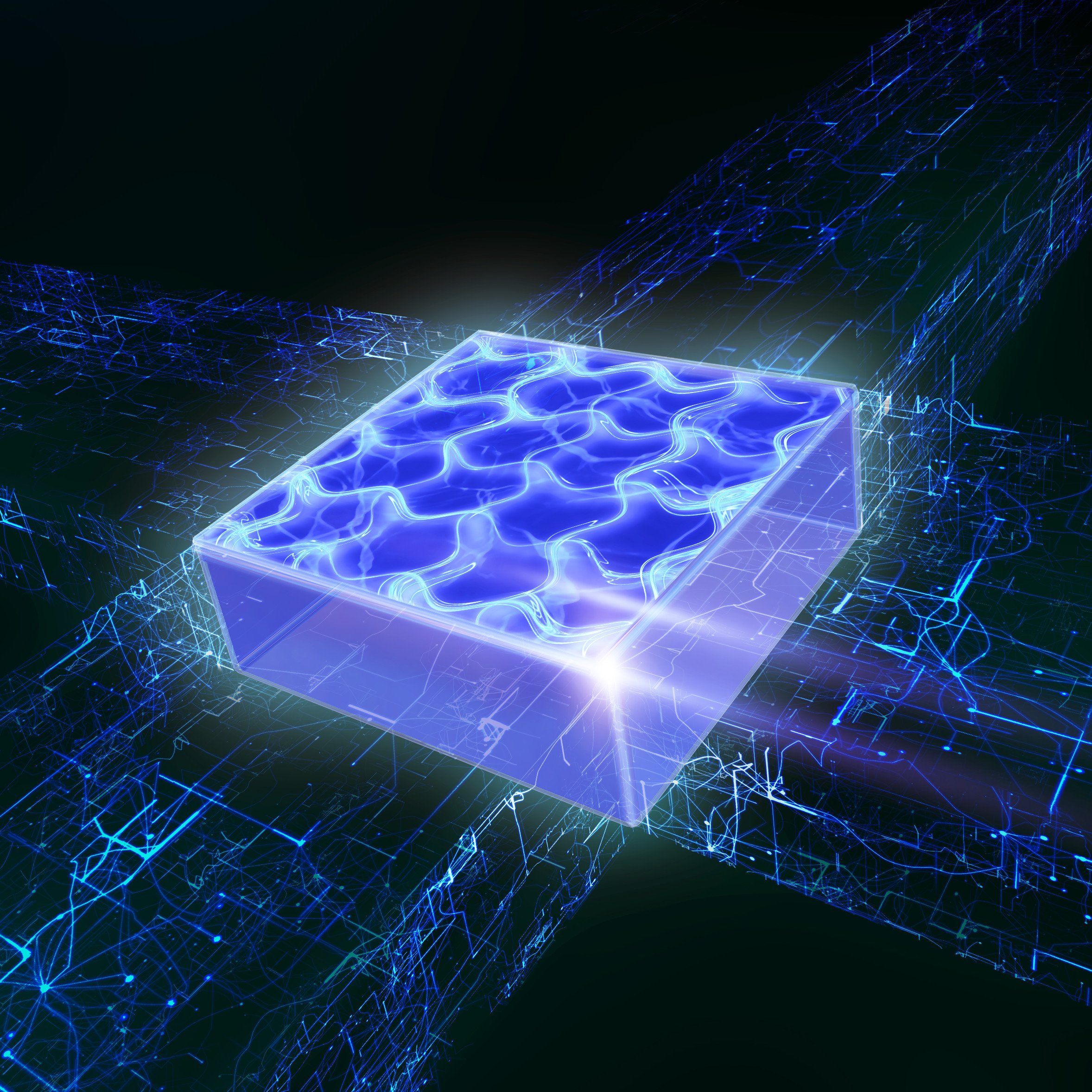
There are some inventions that do not have a major impact on our daily lives until much later. Like the invention that you could use to store information on a disc with pits and bumps and read it with a laser. That’s when the CD was born. Last month, Austrian scientists managed to make quantum matter (read the IO article here) that can be both a liquid and a solid. The practical application is still some time away. But it could have a major impact on the development of new materials.
The Innsbruck research team managed to form a crystal and a superfluid at the same time. Superfluids are liquids that flow without any resistance. The experiment was based on magnetic atoms and an ultracold quantum gas, called the Bose Einstein condensate. This is what is created when a gas is cooled to just above absolute zero (minus 273 degrees Celsius).
Also interesting: Relationship discovered between quantum physics and spacetime
In everyday life, we can only observe three states of aggregation: gaseous, liquid and solid. Substances change their state of aggregation, for example, by changing temperature. Usually substances are solid at low temperatures and gaseous at high temperatures. But if you take a highly diluted gas and cool it down in an extreme way, it becomes neither liquid nor solid, but remains gaseous.
Despite this, the particles do lose more and more energy. Below a certain critical temperature, the quantum properties of these particles become so dominant that what is known as a Bose-Einstein condensate is formed. In this condensate, the individual atoms are completely delocalized. This means that the same atom is present at any point in the condensate at any given time. Consequently, Bose-Einstein condensates are also superfluids.
Supersolid in quantum gas
Francesca Ferlaino’s team used the Bose-Einstein condensate two years ago to create one-dimensional supersolids. The researchers got magnetic atoms to organize themselves into droplets in the ultracold quantum gas and rearrange themselves as crystals. However, all particles still delocalized across all of the droplets, so the gas remained superfluid. The combination of the crystal structure with simultaneous superfluidity is called suprasolid or supersolid. Now scientists have succeeded in extending this phenomenon to two dimensions. They have managed to create systems with two or more rows of droplets.
New perspectives for research
This breakthrough significantly broadens the perspectives for research. In a two-dimensional suprasolid system, for example, it is possible to study how vortices form in the gap between several adjacent droplets. These vortices have been defined in theory but had not yet been demonstrated in practice. Yet they are an important consequence of superfluidity.
So far, vortices have only been observed in uniform superfluids – and in quantized forms. “A quantized vortex is basically a hole in the system, and then the superfluid circulates around this hole with a certain amount of rotation,” explains Matthew Norcia of the research team. “But in supersolids, the vortices should not be quantified in this way. And they should be found in low-density regions. That’s between droplets, not within a droplet where the atomic density is high.”
A quantized vortex is basically a hole in the system, and then the superfluid circulates around this hole with a certain amount of rotation,” Matthew Norcia
Vortices
When researchers talk about quantized vortices in superfluid systems, they are talking specifically about the momentum impulse per particle. This is a unique property of the superfluid that stems from a quantum mechanical treatment of the system. Norcia: “We assume that these quantum conditions are relaxed in supersolids. And in such a way that the momentum impulse per particle associated with a vortex can vary, depending on how the density of the state is modulated. So, if we look at the momentum impulse of these quantized vortices, we may have a measure of just how superfluid different supersolids are.”
However, observing the phenomena of supersolids in quantum gas promises even more insights for research. This is because some important properties of supersolids can only be studied in two dimensions. For example, the rotational properties of a suprafluid can differ drastically from those of a normal fluid or a different system. Similarly, quantities such as viscosity, for which superfluids are unique, only make sense in systems with more than one dimension.
Symmetry
Nevertheless, these findings also help researchers explore the effects of symmetries. Norcia: “When crystalline structures and superfluidity occur simultaneously in supersolids, it relates to the combination of translational and phase symmetries that are each ‘broken’ in a supersolid. A comprehensive understanding of symmetries is critical to physics in general and to materials systems in particular. In this sense, studying the effects of these symmetries can help us better understand other physics systems. Both in the laboratory and in terms of practical applications.”
Laser light
Back in 2017, several research groups undertook similar experiments with lasers and quantum gases made up of sodium or rubidium atoms. The atoms were coupled to periodic structures excited by laser light. That is, the crystalline structure of the atom state was determined by the laser light. The result was that the supersolid that was produced was extremely rigid. This is because laser light does not support the oscillations of the crystalline structure of solids. By contrast, in the case of the magnetic atoms that the Austrian scientists used, it is the direct magnetic interaction between the atoms that causes the density to modulate. This allows the supersolid to be compress and vibrate. It is also this interaction, in combination with the drop potential, that determines the crystalline fraction.
Also interesting: Physicists develop an interface for quantum computers

